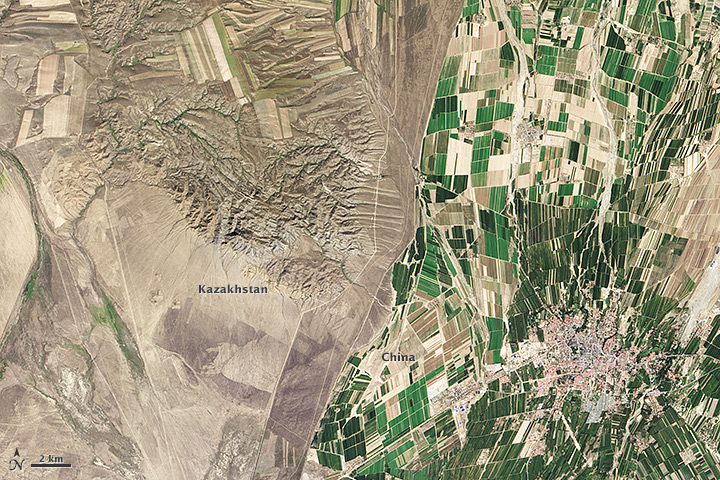The Big One covered the news this week – didn’t you notice? We’re back with news and links on the long-term erthquake forecast for California, the reawakened Oklahoma faults, the UN Disaster Risk Reduction conference, an image tournament, and more. Today is Friday and here are your links!
My colleague and paleoseismicity author Carlos pointed me at this EOS Project update I have missed earlier, although it comes along with a great headline: Earthquake monitoring gets boost from new satellite. The new ESA Sentinel-1A spacecraft provides high-resolution data and extraordinary images, for example of the South Napa earthquake slip and announce “a new era of space-based surveillance of faults”. And the Sentinel-1 data will be freely available!
The Big One covered the news channels this week. The next major earthquake that has to be expected on North America’s West coast was even almost announced to happen in the next thirty years. The USGS released a new long-term earthquake forecast for California. They improved their models significantly in the last years and came to the conclusion, that “the estimate for the likelihood that California will experience a magnitude 8 or larger earthquake in the next 30 years has increased” from about 4.7% to about 7.0% in their latest models. The report can be downloaded here. And the important message is: It’s probable, so be prepared.
Andrew Alden from Oakland Geology concluded:
We can’t deal with the situation using simple, linear computer models based on one idea of Earth’s behavior. The third UCERF is a supple, fine-grained instrument that takes advantage of many significant advances during the last decade.And:
When I told a USGS quake guy yesterday how much I admired the new model, his eyes twinkled. They’re proud of this.
Speaking of models, SRL published considerations of the validity of the California earthquake model. It’s written by E.H. Field, the lead author of the USGS report and entitled with the famous quote “All Models Are Wrong, but Some Are Useful.”
Another press release from the USGS beared some more earthquake news: the reawakened Oklahoma faults could produce larger future events.
I’ve just read about the NASA Earth Observatory Tournament 2015: Earth. What a long title. It’s somehow a tournament on the greatest images of the Earth. There are stunning photographs and satellite images, and great stories attached in different sections like data, art, event and photography. And because I was so slow, you have to be rather quick. The voting is only open until 8pm GMT today. Here’s one of the competing images:

The Kazakhstan-Chinese border, Landsat imagery CC-BY 3.0 USGS, NASA, GAAU
The growing EGU blogosphere is very active in reporting about the UN World Conference on Disaster Risk Reduction. The UN website will also provide live streams – starting tomorrow from 11 am GMT+9.
Although I don’t have any background in landslides or rockfalls, I’m repeatedly impressed by the models and videos landslide research and researchers produce. Here is a review of the 27th February 2014 San Leo landslide, published by the Landslideblog. Watch this great drone footage:
A bit more on the changing climate: A new study by authors from Climate Impact Research Institute in Science Express reports that summer storm weakening is no good news, but leads to more persistent heat extremes. The weakening of strong winds associated with the jetstream prolongs heat extremes with devastating wildfires and droughts.
Have a nice weekend!




No Comments
No comments yet.